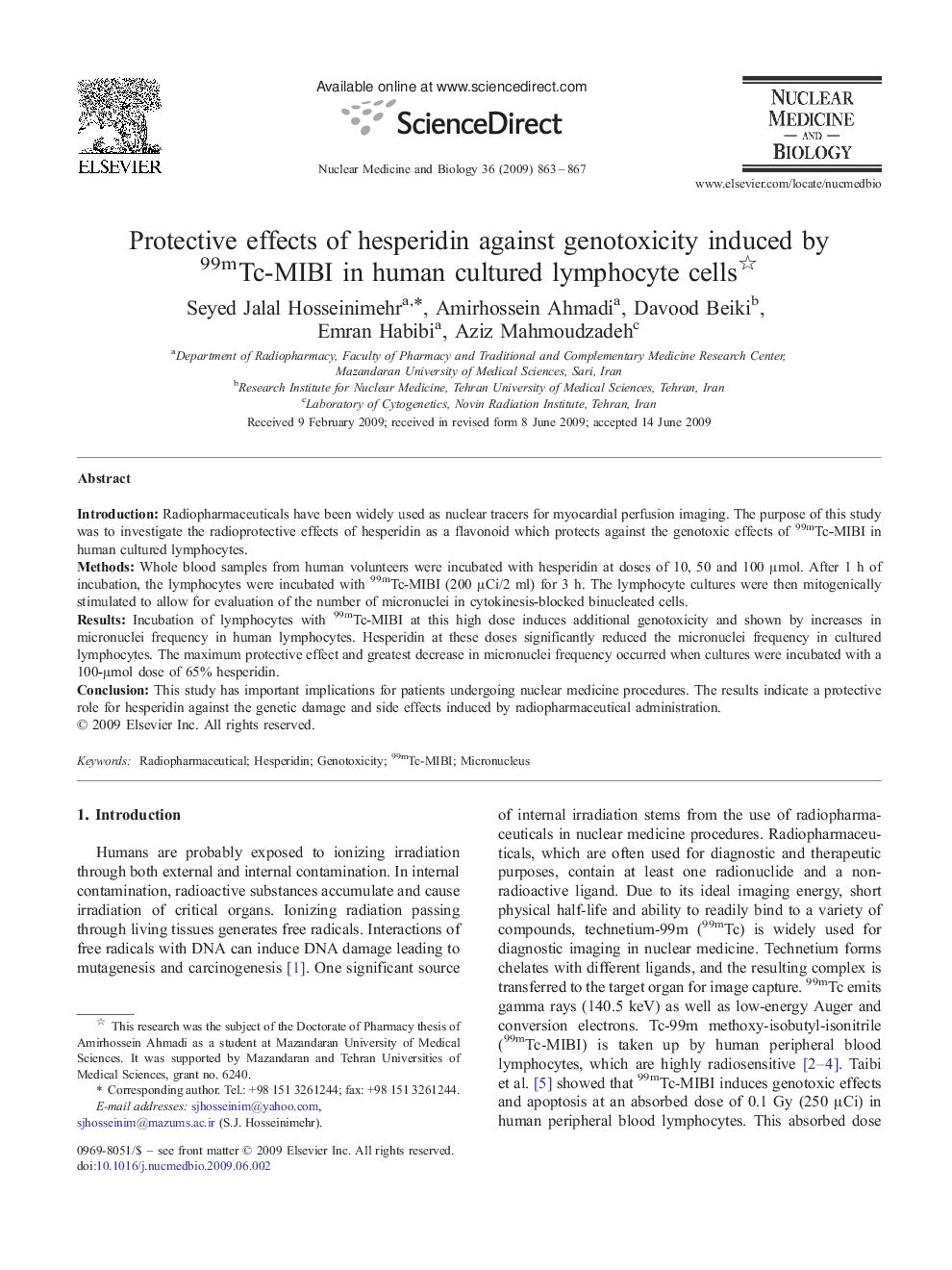| Article ID | Journal | Published Year | Pages | File Type |
|---|---|---|---|---|
| 2154757 | Nuclear Medicine and Biology | 2009 | 5 Pages |
IntroductionRadiopharmaceuticals have been widely used as nuclear tracers for myocardial perfusion imaging. The purpose of this study was to investigate the radioprotective effects of hesperidin as a flavonoid which protects against the genotoxic effects of 99mTc-MIBI in human cultured lymphocytes.MethodsWhole blood samples from human volunteers were incubated with hesperidin at doses of 10, 50 and 100 μmol. After 1 h of incubation, the lymphocytes were incubated with 99mTc-MIBI (200 μCi/2 ml) for 3 h. The lymphocyte cultures were then mitogenically stimulated to allow for evaluation of the number of micronuclei in cytokinesis-blocked binucleated cells.ResultsIncubation of lymphocytes with 99mTc-MIBI at this high dose induces additional genotoxicity and shown by increases in micronuclei frequency in human lymphocytes. Hesperidin at these doses significantly reduced the micronuclei frequency in cultured lymphocytes. The maximum protective effect and greatest decrease in micronuclei frequency occurred when cultures were incubated with a 100-μmol dose of 65% hesperidin.ConclusionThis study has important implications for patients undergoing nuclear medicine procedures. The results indicate a protective role for hesperidin against the genetic damage and side effects induced by radiopharmaceutical administration.
